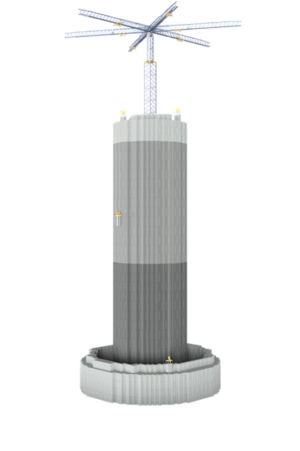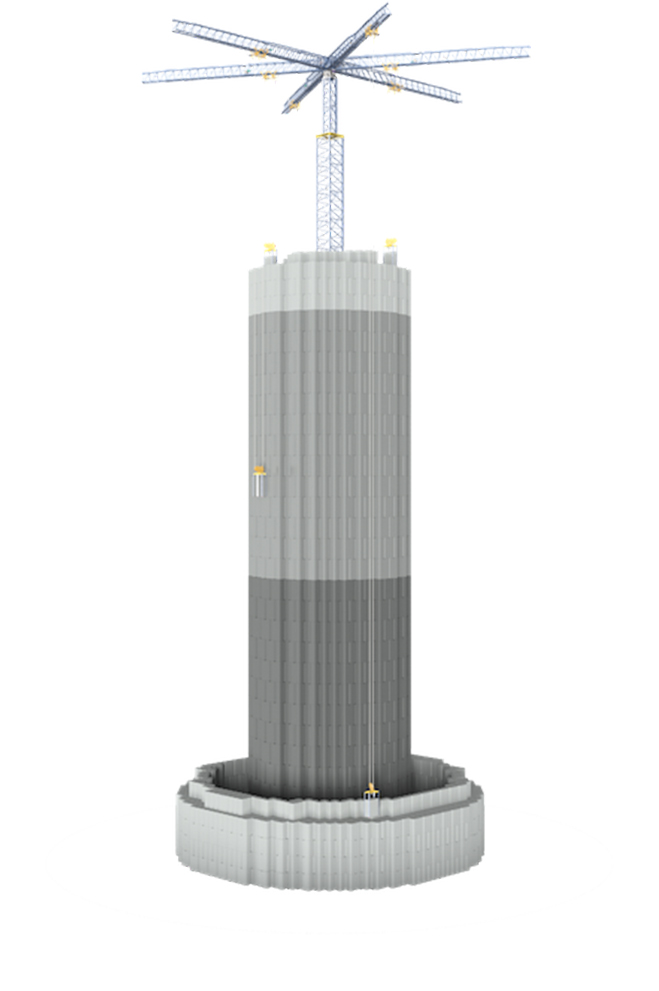India to build solid state storage power plant
 Pumped storage power plants are a fairly common type of auxiliary power plants. They are used to equalize the daily heterogeneity of the electrical load graph. The power plant of this type consists of several elements, including the upstream, downstream and generators. When the power consumption from the network is minimal, the energy becomes less expensive, and the storage power plant pumps water upward. When energy consumption reaches a peak, then electricity becomes expensive, often the network does not cope with current loads. Then the accumulating power plant comes into operation - it drains water from the upstream to the lower through the generator, which produces current and sends it to the network. Thus, it is possible to avoid surges in energy consumption, which harms the entire infrastructure and the devices connected to it.
Pumped storage power plants are a fairly common type of auxiliary power plants. They are used to equalize the daily heterogeneity of the electrical load graph. The power plant of this type consists of several elements, including the upstream, downstream and generators. When the power consumption from the network is minimal, the energy becomes less expensive, and the storage power plant pumps water upward. When energy consumption reaches a peak, then electricity becomes expensive, often the network does not cope with current loads. Then the accumulating power plant comes into operation - it drains water from the upstream to the lower through the generator, which produces current and sends it to the network. Thus, it is possible to avoid surges in energy consumption, which harms the entire infrastructure and the devices connected to it.A kind of accumulating power plants is a solid-state accumulating station (TAES). The same principle is used here, only loads are applied instead of water. They are lifted to the top with elevators or cranes during the day with the lowest energy cost, and lowered down, starting generators when energy consumption reaches a peak. It is this power station that they are going to build in India in 2019.
The project of the industrial battery was proposed by the Energy Vault company, which is engaged in the construction of various kinds of energy systems. The project is a tower with six cranes at the top. With their help, lift and lower loads, as mentioned above. Loads - in fact, concrete blocks.
A CAPS of this type can be built almost anywhere, without much damage to the environment. This is the difference between the TPP and the pumped-storage power plants, which can only be built in a region where a number of necessary conditions coincide - the presence of water bodies, height differences and certain weather conditions. The operation of pumped storage power plants causes a rather strong damage to the environment, mainly aquatic ecosystems.
')
Well, raising and lowering concrete blocks does not harm anyone at any time of the day. You can build a tower with cranes even on the plain, even in the highlands. It can also be used at any time - both days and years. The cost of energy produced by such a station is lower than that of other types of storage power plants (approximately $ 200- $ 250 per kWh). The network station can give 4 MW of energy. The service life is 30-40 years, which is quite a lot.

Earlier, the same company built a test version of a solid-state storage power plant in Switzerland, but its dimensions were 7 times smaller than the design ones. The control of cranes is automatic, special software “monitors” the station’s operating mode Another interesting point is that the company will make blocks from recyclables, in order to further reduce the station's environmental impact.
If the project is successful and shows itself well, then soon the company will build similar systems in other countries and regions - where the peak loads on the energy network are maximum.
Another type of "insuring" stations - batteries, which offers Tesla Inc. The company has already built one such in South Australia, where it also helps to cope with peak loads. True, there is a difference - the region where the battery is installed receives energy from alternative sources, including solar panels and wind turbines. On days when it is cloudy and there is no wind, the generation of electricity falls, respectively, the infrastructure does not always cope with the load. In such periods, the cost of electricity in South Australia rises to $ 14,000 per megawatt. The Tesla battery accumulates energy when it is supplied to the regional network in excess and gives it away on days of “shortage”. Thus, it is not necessary to use gas generators, and the cost of operating the network, and accordingly the electricity itself falls. According to the administration of the region, at the moment the battery has helped save about $ 30 million (Australian dollars, but nonetheless).
Source: https://habr.com/ru/post/430386/
All Articles